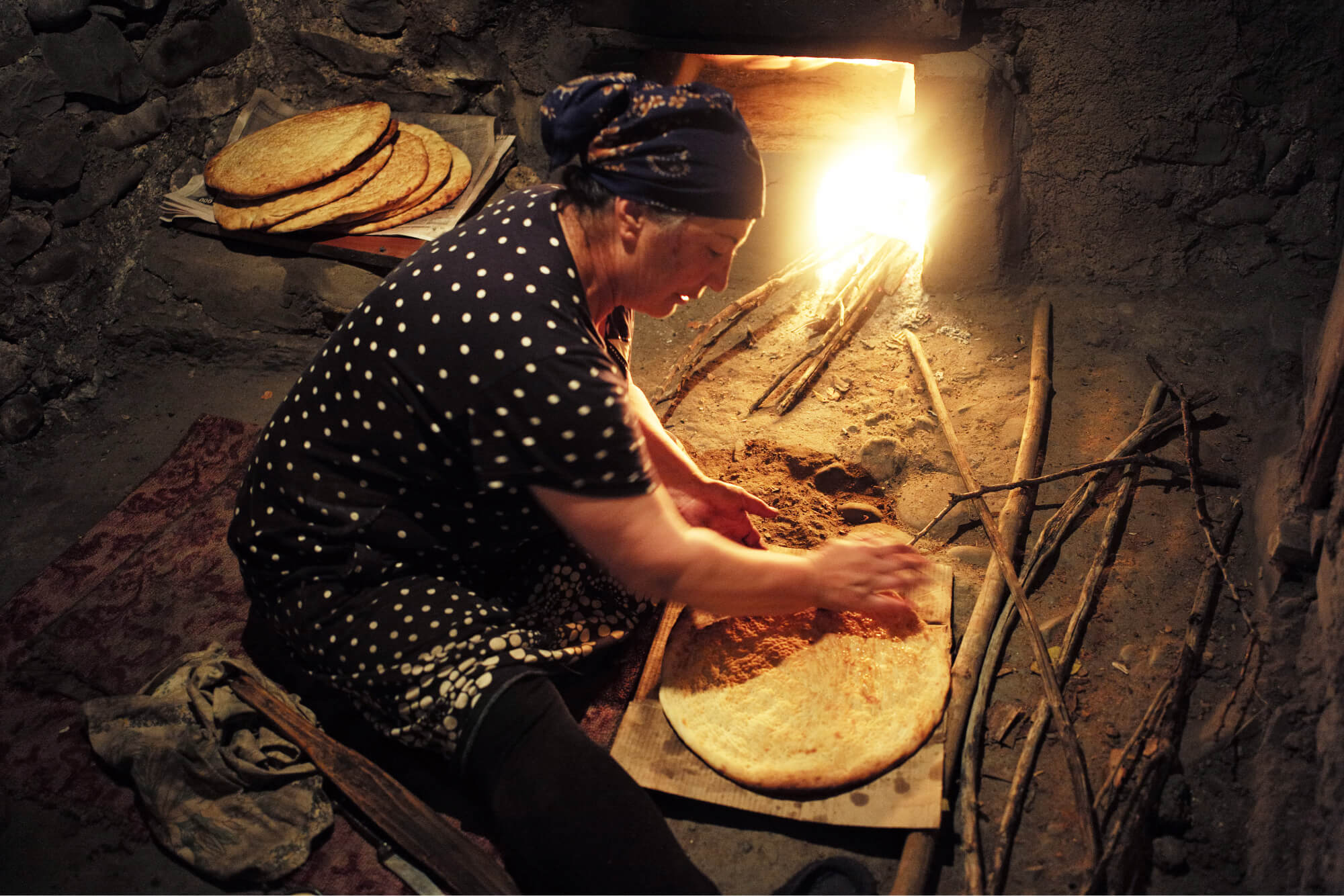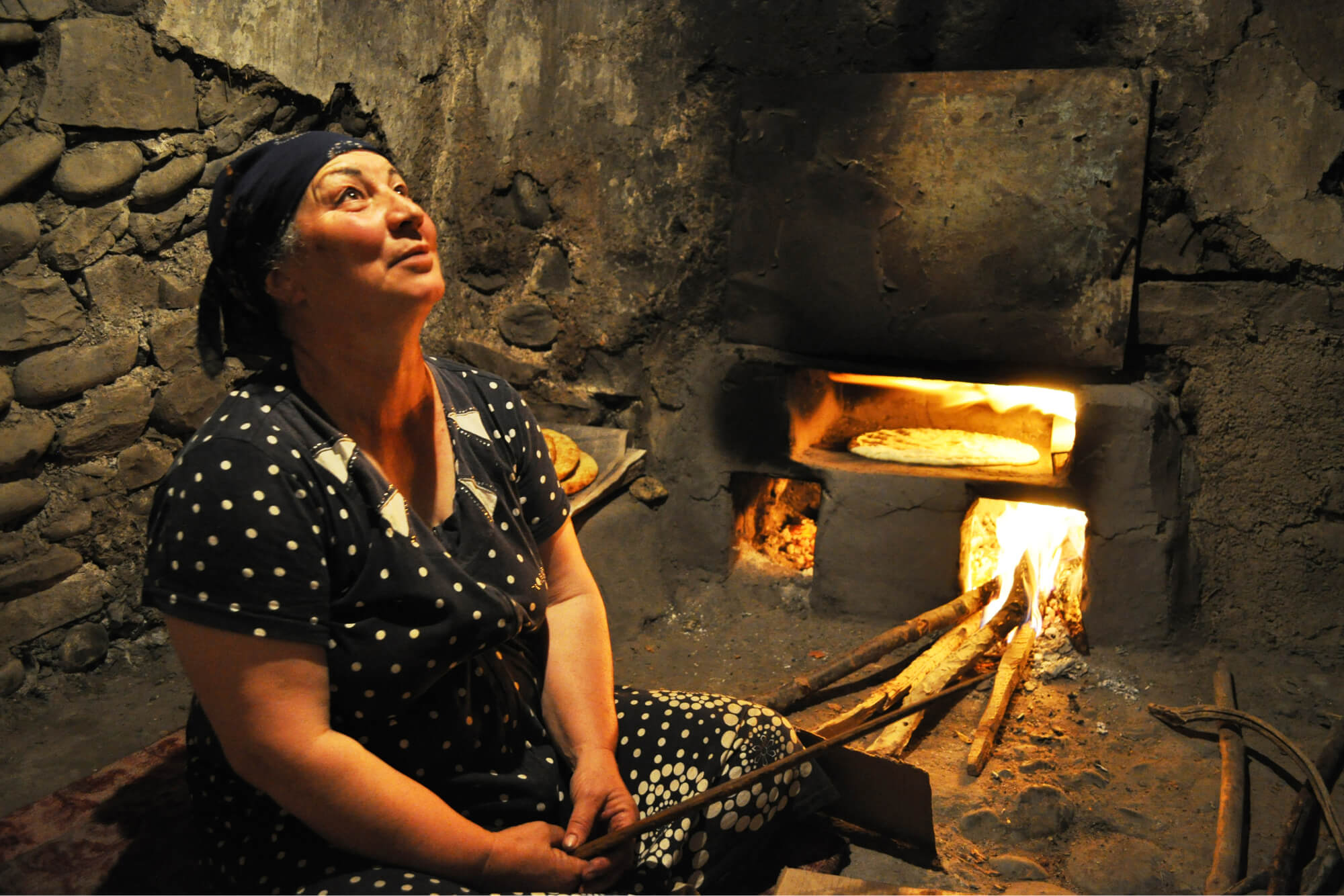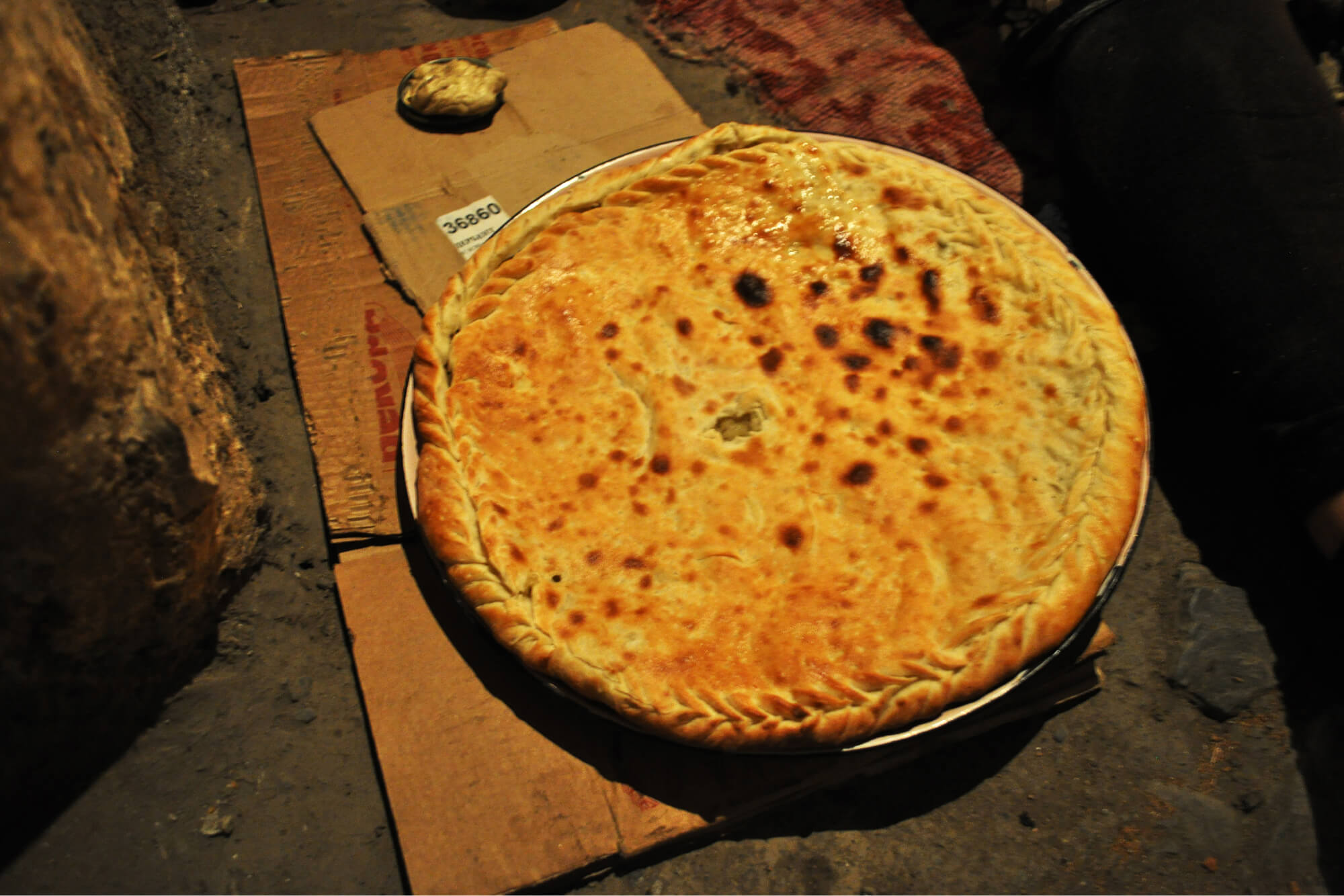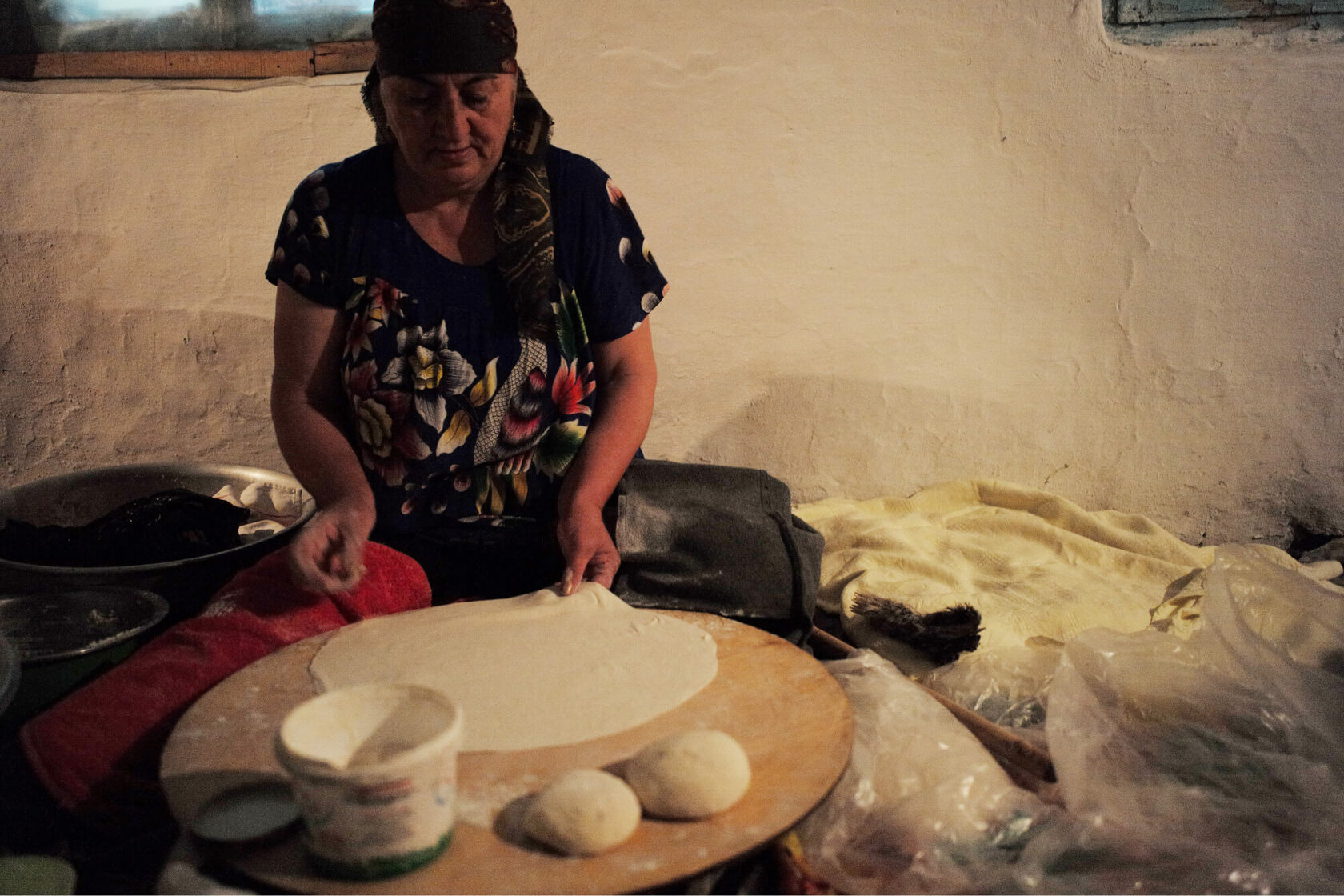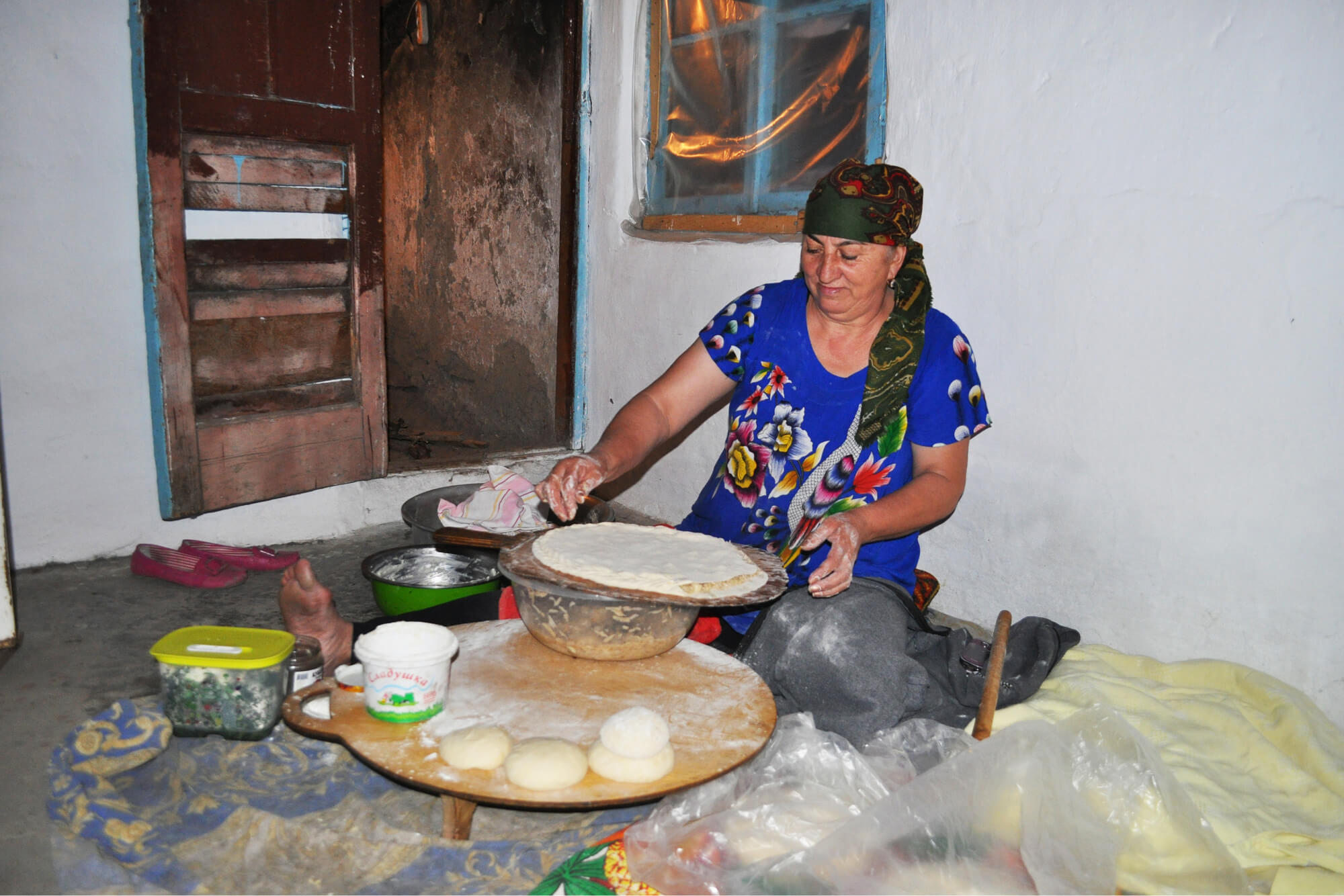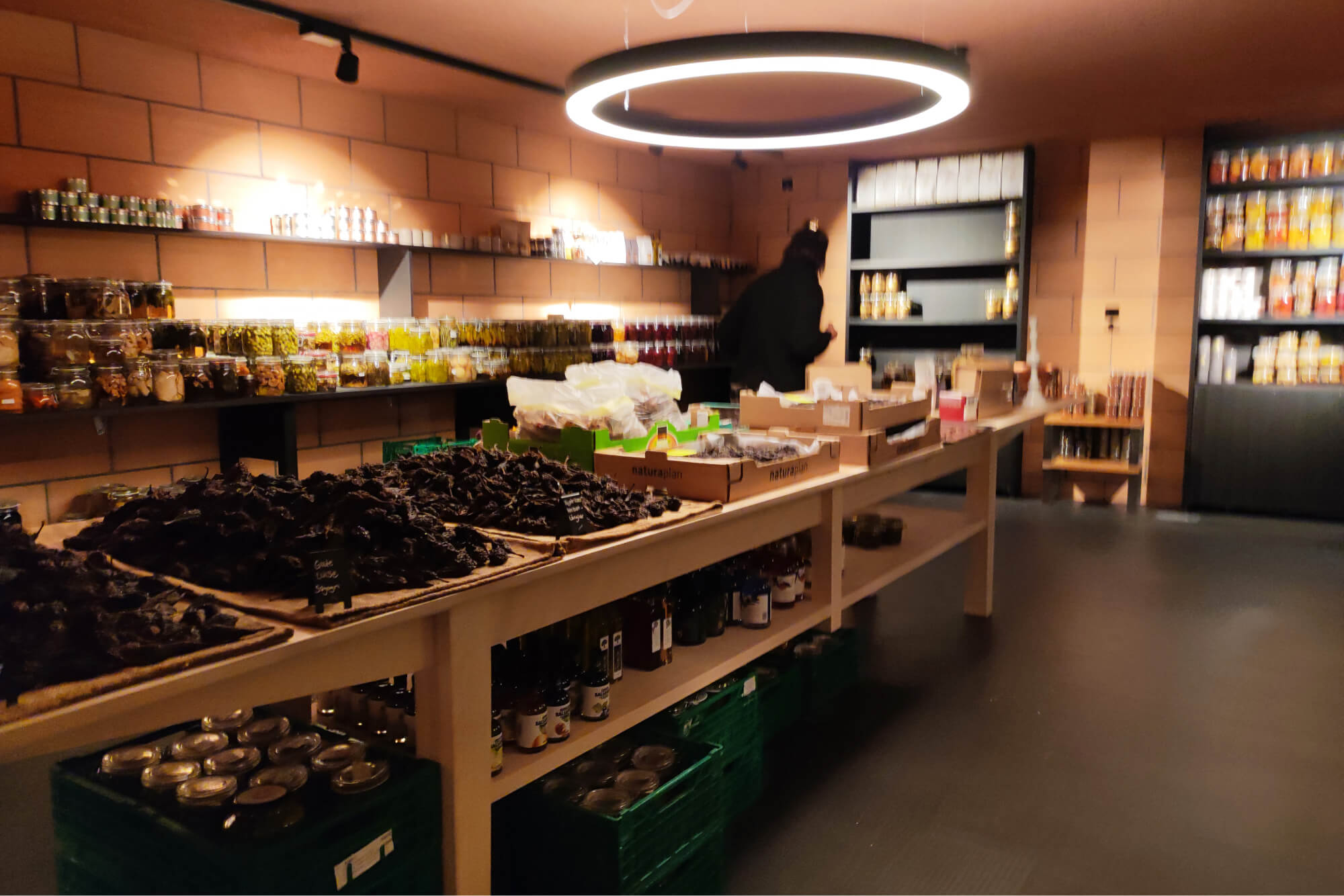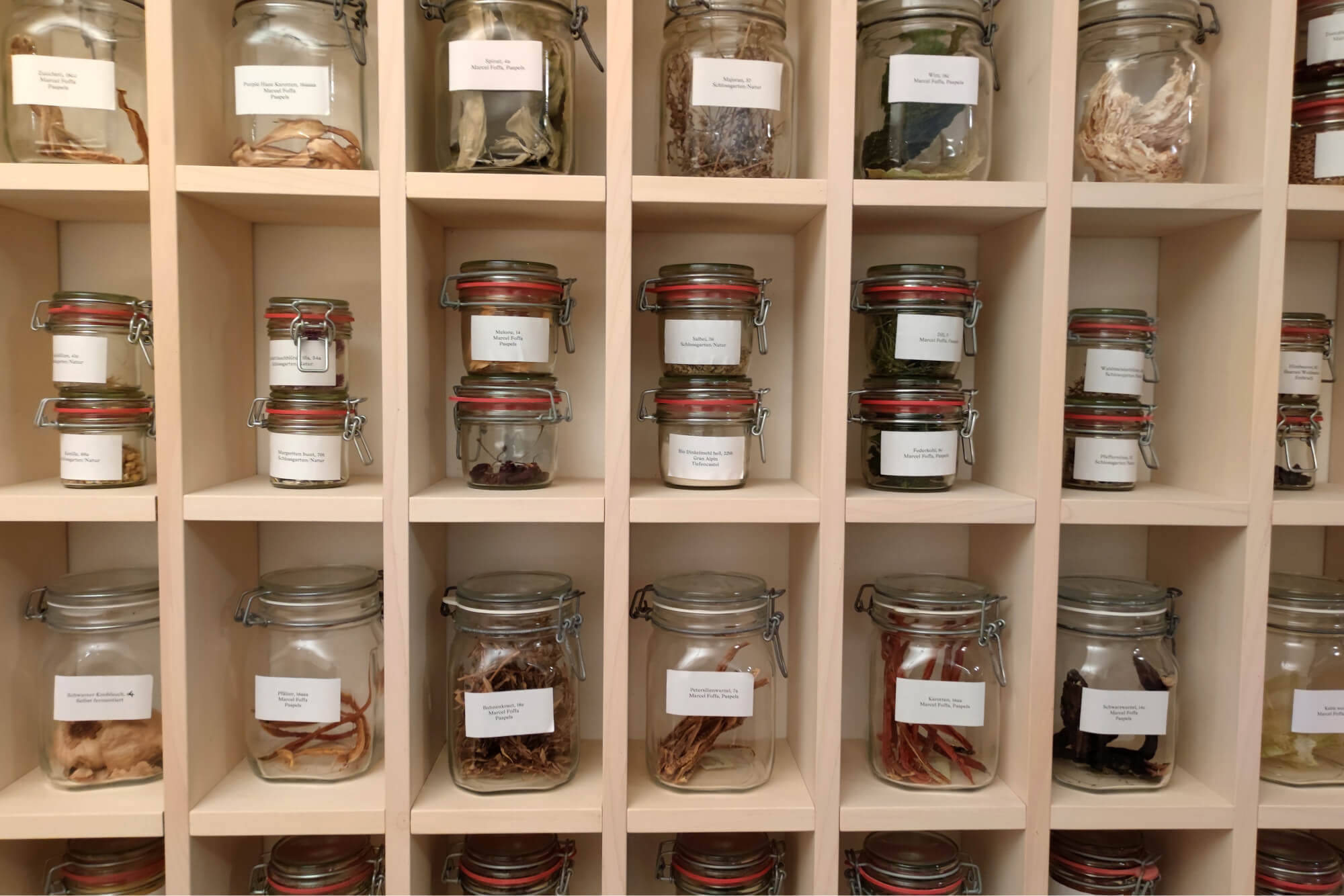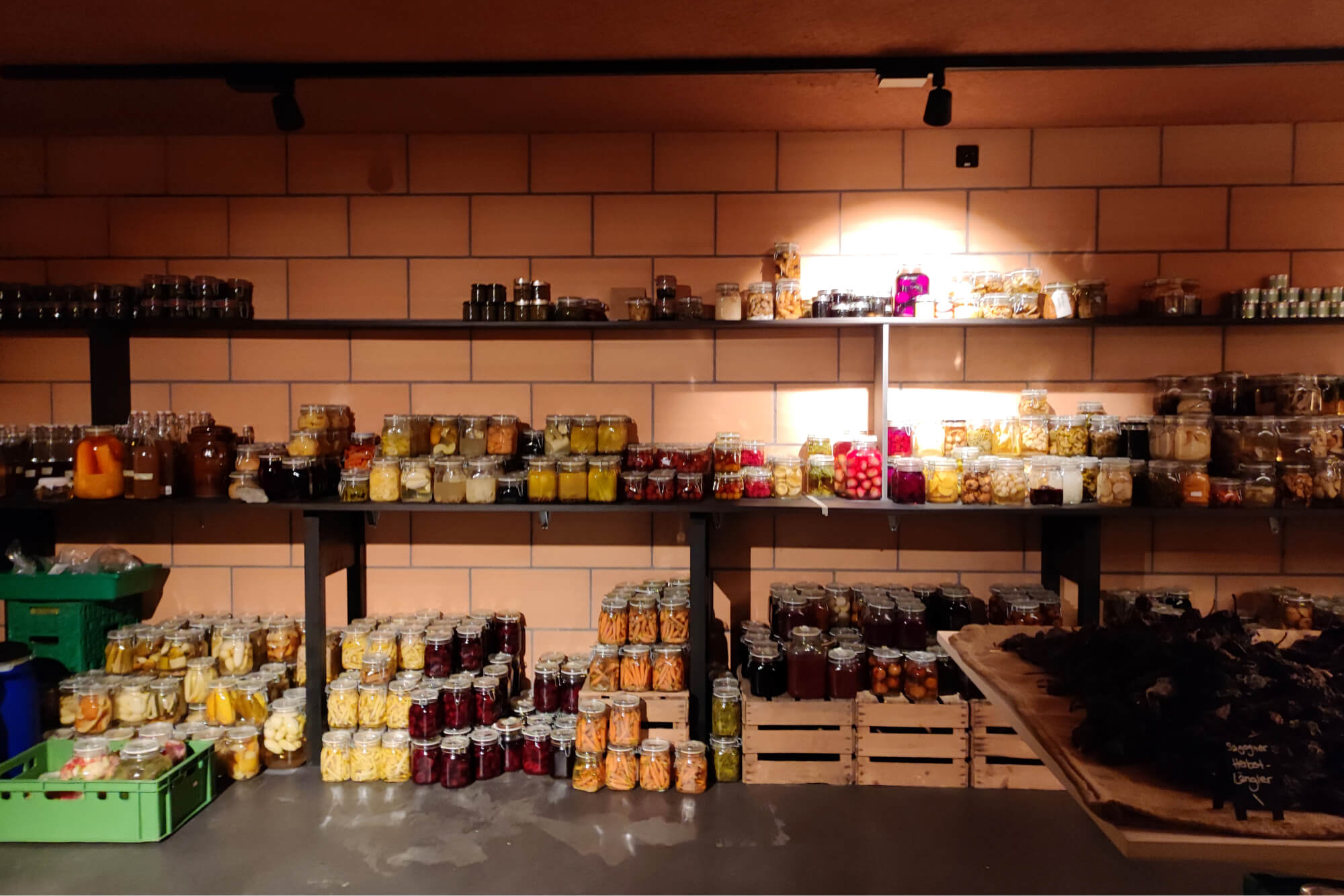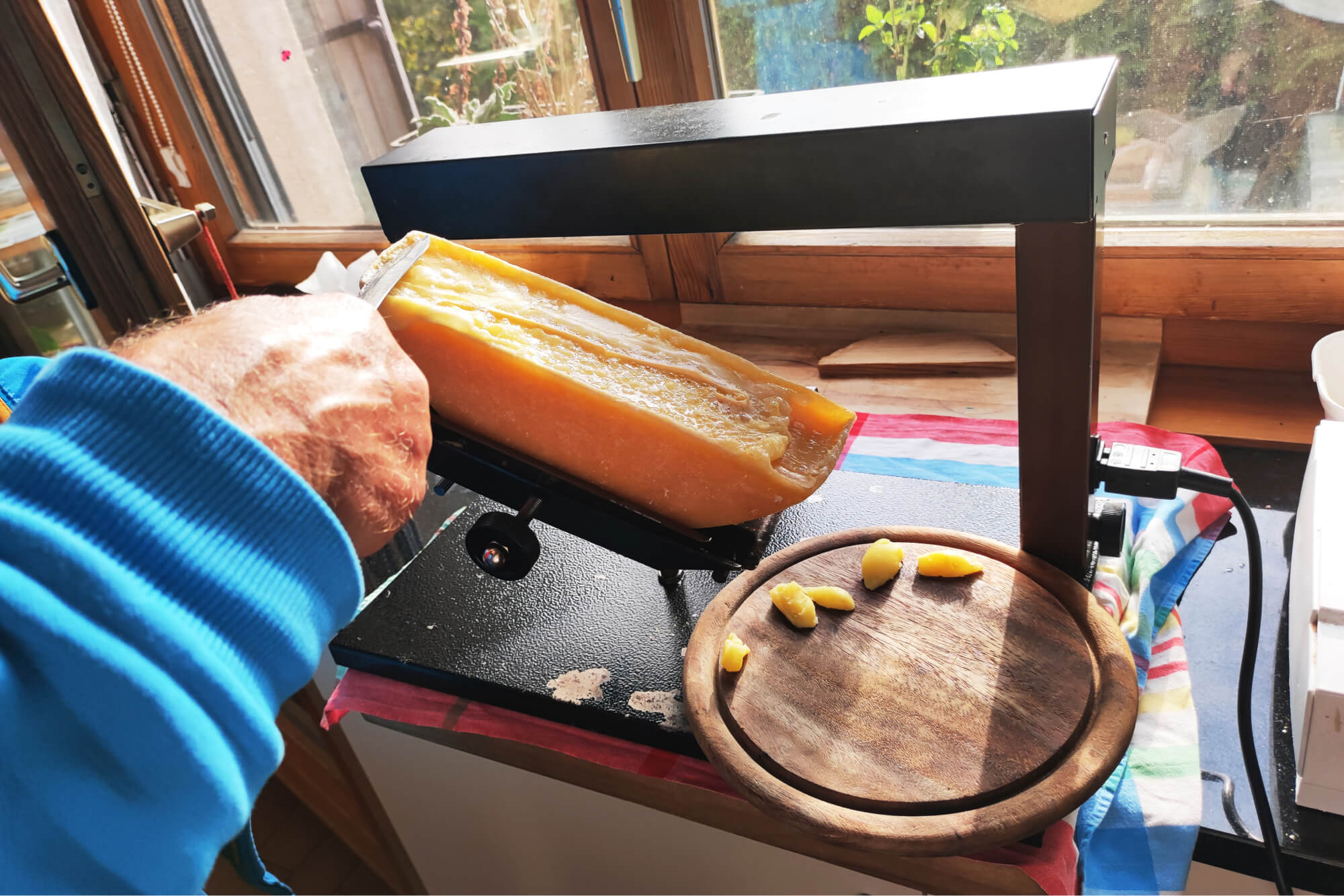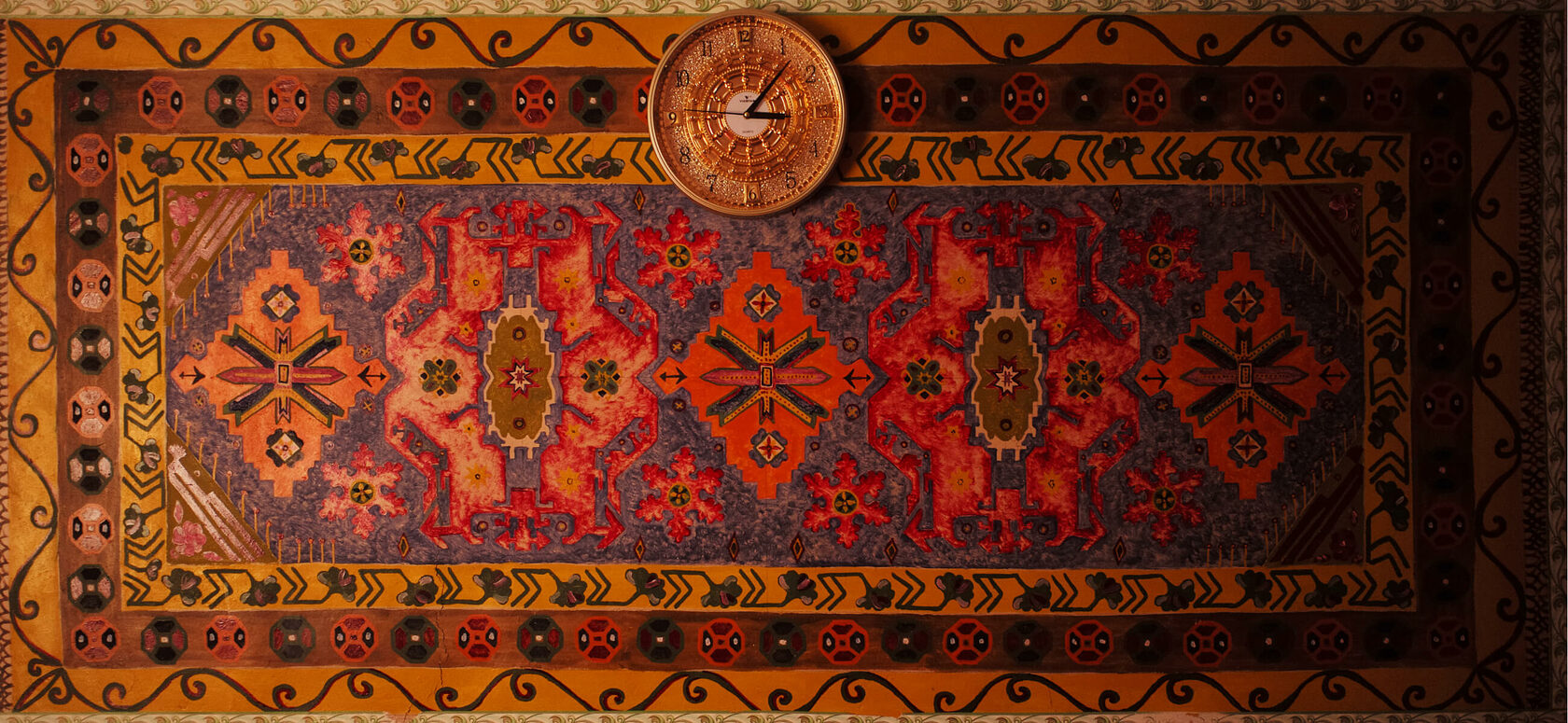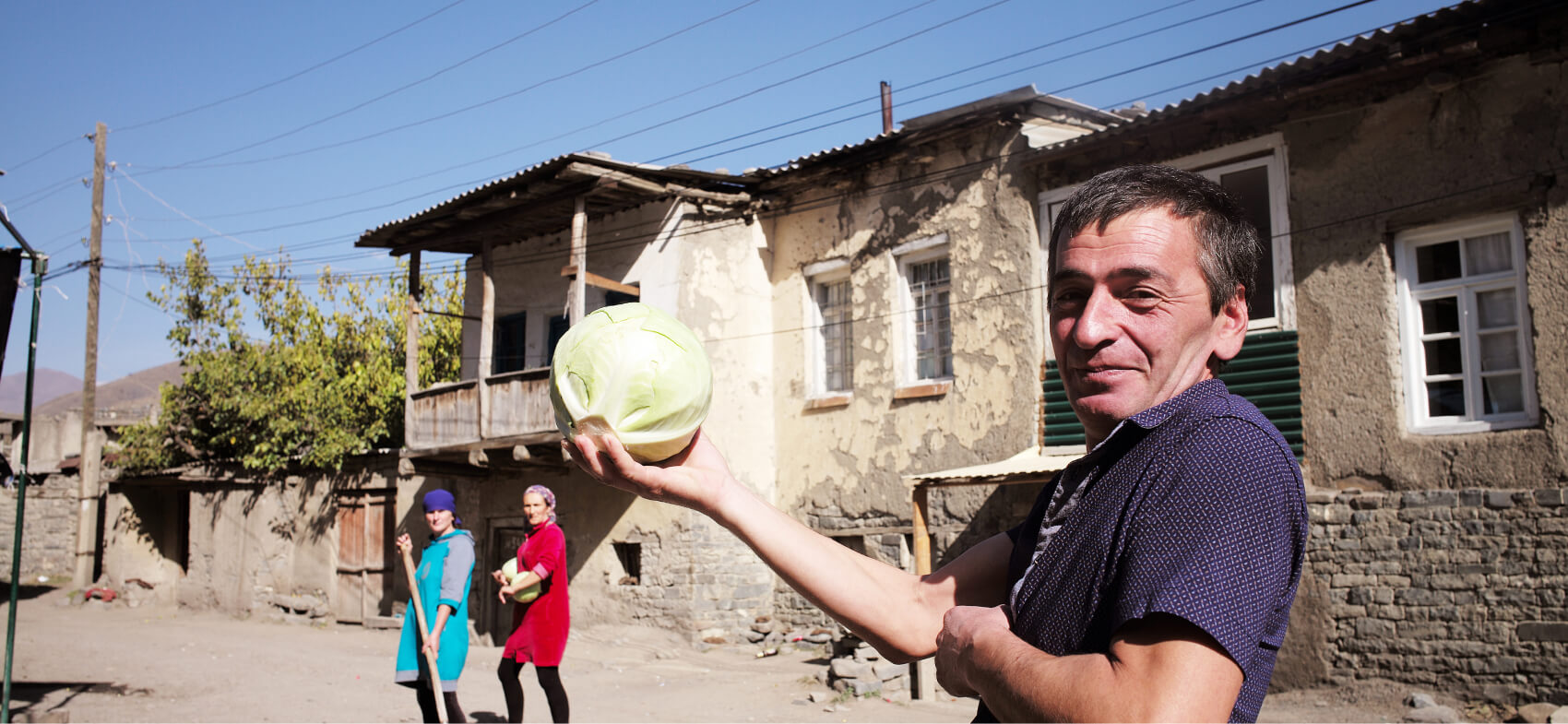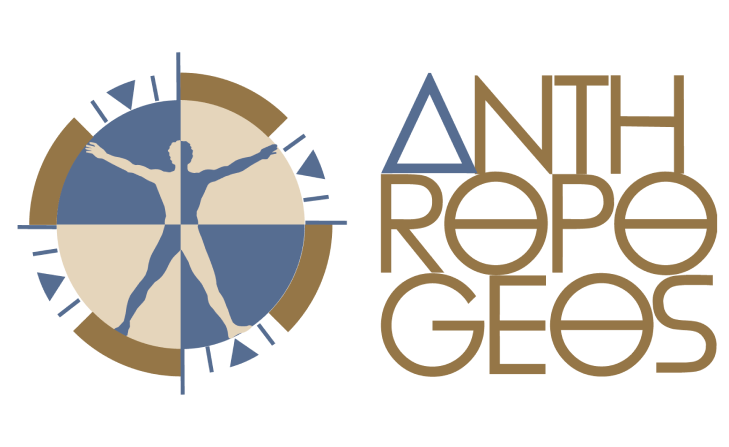

1/2
Saint Pierre de Clage, Canton of Valais, Switzerland 2021.
HIGHLANDERS. THE CAUCASUS & THE ALPS
Chapter VIII: Gastronomy


2/2
Rutul, Dagestan, 2016.
HIGHLANDERS. THE CAUCASUS & THE ALPS
Chapter VIII: Gastronomy
BREAD
NAIDA
The Caucasus
Bread is the most important food in traditional culture. Despite the country, it is the basis of nutrition. Bread ovens are usually located in separate outbuildings in Dagestan. Not every family has an oven, so Naida goes to bake bread and pies to her son-in-law's parents. Her sister helps her.
The Caucasus
Bread is the most important food in traditional culture. Despite the country, it is the basis of nutrition. Bread ovens are usually located in separate outbuildings in Dagestan. Not every family has an oven, so Naida goes to bake bread and pies to her son-in-law's parents. Her sister helps her.
NAIDA
Naida
The Caucasus
Bread is the most important food in traditional culture. Despite the country, it is the basis of nutrition. Bread ovens are usually located in separate outbuildings in Dagestan. Not every family has an oven, so Naida goes to bake bread and pies to her son-in-law's parents. Her sister helps her.
Rutul, Dagestan, 2016.
This type of bread "hiran fu" is considered Lezgian, it is baked from unleavened or yeast dough. The flatbread is brushed with egg or soured milk before baking and then decorated with dots applied with the tips of feathers tied into a bundle or special stamps.
This type of bread "hiran fu" is considered Lezgian, it is baked from unleavened or yeast dough. The flatbread is brushed with egg or soured milk before baking and then decorated with dots applied with the tips of feathers tied into a bundle or special stamps.
Qusar city, Azerbaijan, 2016.
Qusar city, Azerbaijan, 2016.
STEFANO
The Alps
The Alps
The Swiss do not bake bread at home, though they do love going to the local bakeries. Stefano is a third-generation baker. He uses his ancestors' bread recipe with a wine sourdough that requires a long proving period. Thanks to the prolonged proving, as a result, you get a bread with very low gluten content.
STEFANO
The Alps
The Swiss do not bake bread at home, though they do love going to the local bakeries. Stefano is a third-generation baker. He uses his ancestors' bread recipe with a wine sourdough that requires a long proving period. Thanks to the prolonged proving, as a result, you get a bread with very low gluten content.
After moving from Ticino to Valais, Stefano worked for a while in large bakeries, but there he did not like their "heartless" way of working. However, he does not consider this experience useless — it was there that Stefano learned the peculiarities of baking and discipline. He opened his bakery "1955" in the summer of 2021. It is named after the village of Saint Pierre de Clage — the numbers represent the zip code of the village.
After moving from Ticino to Valais, Stefano worked for a while in large bakeries, but there he did not like their "heartless" way of working. However, he does not consider this experience useless — it was there that Stefano learned the peculiarities of baking and discipline. He opened his bakery "1955" in the summer of 2021. It is named after the village of Saint Pierre de Clage — the numbers represent the zip code of the village.

Saint Pierre de Clage, Canton of Valais, Switzerland, 2021.
Stefano modified his father's recipe, and now bakes bread with chestnuts, figs and apricots. He comes to the bakery every day at three in the morning to brush the pastry with egg and send it to the oven at the peak of its proving. The bread is baked on hot stones so that it remains as puffy as possible and keeps its shape well.
Stefano modified his father's recipe, and now bakes bread with chestnuts, figs and apricots. He comes to the bakery every day at three in the morning to brush the pastry with egg and send it to the oven at the peak of its proving. The bread is baked on hot stones so that it remains as puffy as possible and keeps its shape well.
Stefano specializes in panettone — rich, round pastry resembling Easter cakes. His panettone made it to the quarter-finals of international competition, and in October 2021, Stefano and his pastries won six medals at the bakers' competitions in Switzerland.
Stefano specializes in panettone — rich, round pastry resembling Easter cakes. His panettone made it to the quarter-finals of international competition, and in October 2021, Stefano and his pastries won six medals at the bakers' competitions in Switzerland.

Saint Pierre de Clage, Canton of Valais, 2021.


FOOD PRESERVATIONS AND CANNING
THE CAUCASUS
Dagestan's specialty is dried beef and lamb meat.
The meat dries better in the coolness of the mountain air than in the valley. To make a traditional mountain sausage, beef intestines are stuffed with minced meat and mixed with mountain onions and caraway seeds. In dried form, both meat and sausage can be stored for a very long time. You need to boil it before eating.
FOOD PRESERVATIONS AND CANNING
the CAUCASUS
Dagestan's specialty is dried beef and lamb meat.
The meat dries better in the coolness of the mountain air than in the valley. To make a traditional mountain sausage, beef intestines are stuffed with minced meat and mixed with mountain onions and caraway seeds. In dried form, both meat and sausage can be stored for a very long time. You need to boil it before eating.
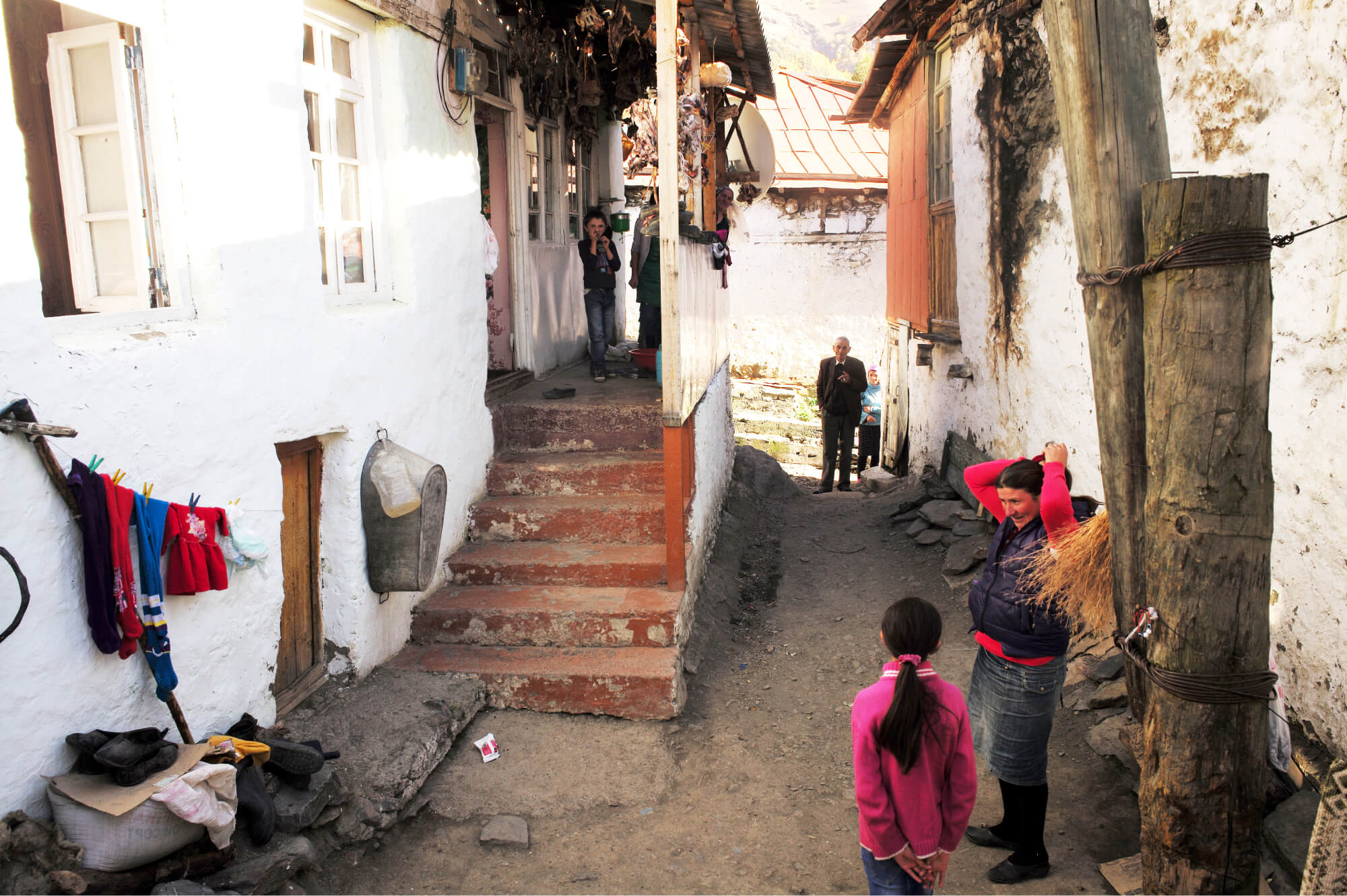
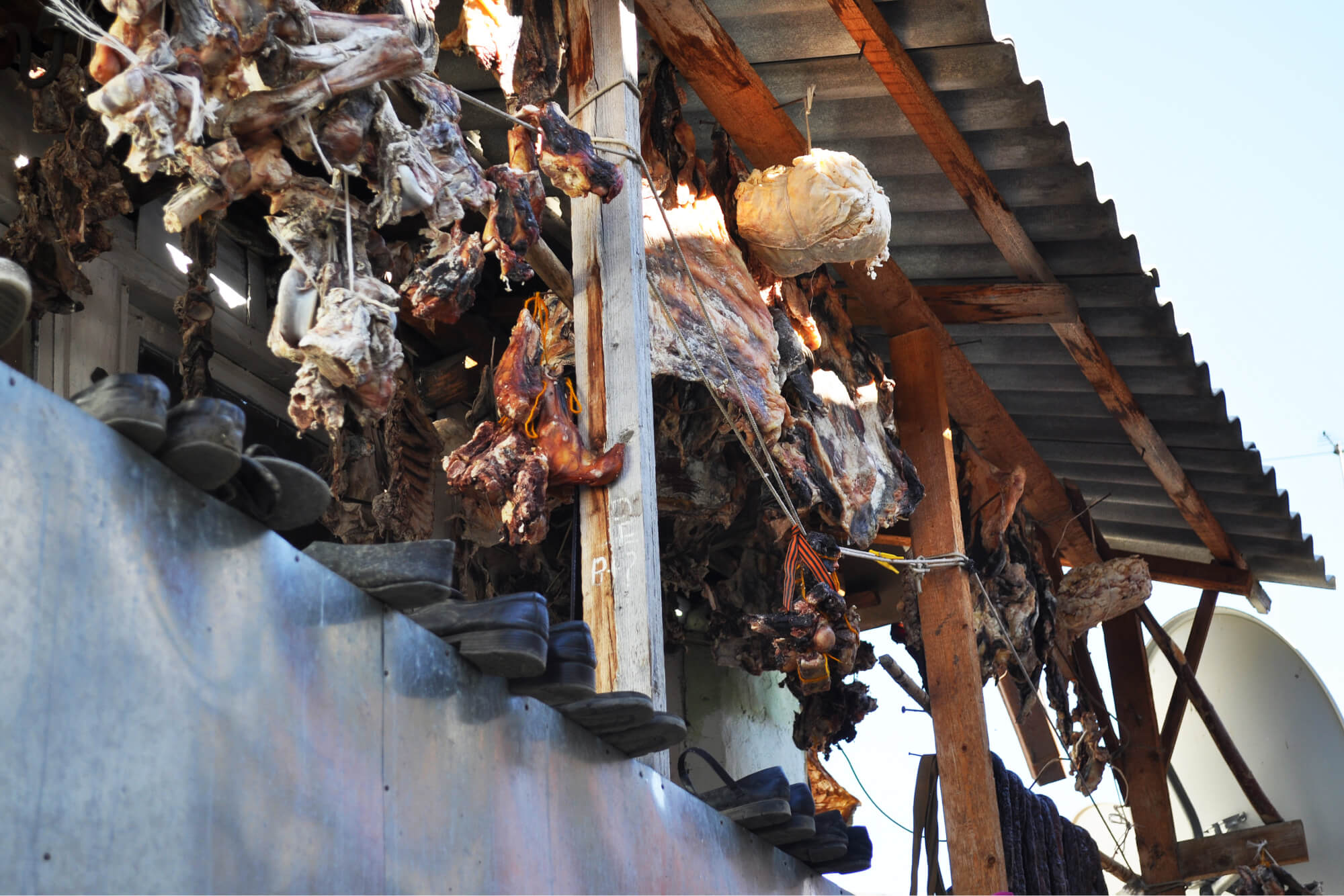
Gelmets village, Dagestan, 2016.

Gelmets village, Dagestan, 2016.
Meat is also dried in restaurants. Such a picture can be seen in every mountain village of Dagestan.
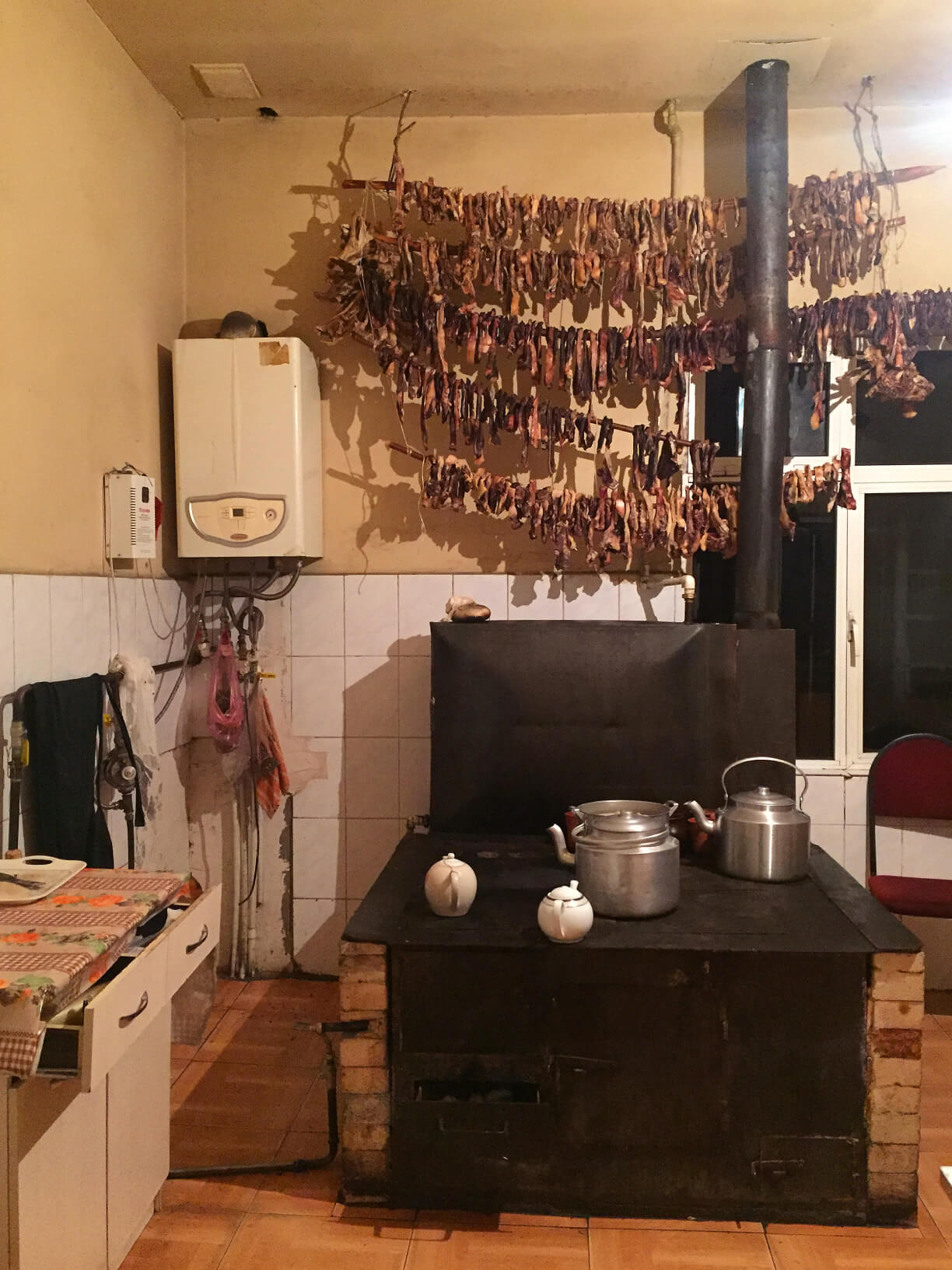
Zaqatala, Azerbaijan, 2016.
Meat is also dried in restaurants. Such a picture can be seen in every mountain village of Dagestan.

Zaqatala, Azerbaijan, 2016.
the ALPS
Preparing fruits and vegetables for the winter is a practice quite familiar to the Swiss of the older generation who are lucky enough to have their own vegetable garden. But restaurants also do this.
For example, this is what looks like the cellar of the Casa Caminada restaurant of three Michelin star chef Andreas Caminada in the town of Furstenau. All these fruits were grown in the restaurant’s garden.
the ALPS
Preparing fruits and vegetables for the winter is a practice quite familiar to the Swiss of the older generation who are lucky enough to have their own vegetable garden. But restaurants also do this.
For example, this is what looks like the cellar of the Casa Caminada restaurant of three Michelin star chef Andreas Caminada in the town of Furstenau. All these fruits were grown in the restaurant’s garden.
Furstenau, Canton of Grisons, Switzerland, 2021.


FAMILY MEALS
THE CAUCASUS
Khinkal, a traditional dish for Dagestan, are pieces of dough cooked in meat broth and served with boiled meat, a cup of broth, and sauces (the most popular today are tomato, garlic, or sour cream).
Khinkal, a traditional dish for Dagestan, are pieces of dough cooked in meat broth and served with boiled meat, a cup of broth, and sauces (the most popular today are tomato, garlic, or sour cream).
There are several variants of khinkal, usually identified with one or another group of people in Dagestan: thus, there are Awar khinkal, Dargin, Lak and others. The word sounds similar to the name of the Georgian dish khinkali. For some, they are fundamentally different (almost the same as comparing dumplings and pasta with meat), for others they are the same (cooked meat and dough).
FAMILY MEALS
THE CAUCASUS
Khinkal, a traditional dish for Dagestan, are pieces of dough cooked in meat broth and served with boiled meat, a cup of broth, and sauces (the most popular today are tomato, garlic, or sour cream).
There are several variants of khinkal, usually identified with one or another group of people in Dagestan: thus, there are Awar khinkal, Dargin, Lak and others. The word sounds similar to the name of the Georgian dish khinkali. For some, they are fundamentally different (almost the same as comparing dumplings and pasta with meat), for others they are the same (cooked meat and dough).

Derbent, Dagestan, 2016.

Derbent, Dagestan, 2016.
The etymology of the names has not yet been fully researched and there is no substantiated evidence of their relationship. It is believed that the Georgian name comes from Avar, but this version is not generally accepted. In Georgia, however, khinkali is considered a dish of the Khevsurians, Pshavi and Tushetians, i.e. the East Georgian highlanders who are immediate neighbors of the Dagestani.
The etymology of the names has not yet been fully researched and there is no substantiated evidence of their relationship. It is believed that the Georgian name comes from Avar, but this version is not generally accepted. In Georgia, however, khinkali is considered a dish of the Khevsurians, Pshavi and Tushetians, i.e. the East Georgian highlanders who are immediate neighbors of the Dagestani.
Preparation of one of the varieties of hinkal. A small piece of dough, lightly pressed, is rolled out with the index finger so that it takes on a shell-like shape.
Preparation of one of the varieties of hinkal. A small piece of dough, lightly pressed, is rolled out with the index finger so that it takes on a shell-like shape.
Preparation of one of the varieties of hinkal. A small piece of dough, lightly pressed, is rolled out with the index finger so that it takes on a shell-like shape.
THE ALPS
Raclette is a specialty of the Canton of Valais and a traditional weekend family dinner for the whole family. Raclette is often bought for a half or whole head — as it is more convenient to melt it. In stores, you will see entire cold rooms for storing this cheese. There are publications with the title "Haute Raclette" on the shelves of bookstores.
THE ALPS
Raclette is a specialty of the Canton of Valais and a traditional weekend family dinner for the whole family. Raclette is often bought for a half or whole head — as it is more convenient to melt it. In stores, you will see entire cold rooms for storing this cheese. There are publications with the title "Haute Raclette" on the shelves of bookstores.
Jean-Jérôme and Patricia
The Alps
Jean-Jérôme and Patricia
The Alps
Since Jean-Jérôme and Patricia’s family eat raclette quite often, they have a piece of heavy and large melting equipment at home — half of a cheese head is placed on it. The headman of the evening distributes the portions in a circle, starting with the one sitting on his right.
Since Jean-Jérôme and Patricia’s family eat raclette quite often, they have a piece of heavy and large melting equipment at home — half of a cheese head is placed on it. The headman of the evening distributes the portions in a circle, starting with the one sitting on his right.
Saviese, Canton of Valais, Switzerland, 2021.
Saviese, Canton of Valais, Switzerland, 2021.
People usually eat raclette with small potatoes and pickled vegetables — Patricia has prepared zucchini for our table. It is accompanied with hot tea or wine. The Swiss consider drinking cold beverages and water with this dish incompatible: since cheese is very fatty, it can cause discomfort after eating.
People usually eat raclette with small potatoes and pickled vegetables — Patricia has prepared zucchini for our table. It is accompanied with hot tea or wine. The Swiss consider drinking cold beverages and water with this dish incompatible: since cheese is very fatty, it can cause discomfort after eating.


LOCAL PRODUCTION
LOCAL PRODUCTION
It is difficult to imagine a Caucasian table without cheese.
Cheese is brought to the Qusar market from all over the district. It is made from cow's milk, which remains after skimming, and from sheep's and goat's milk. The main secret of cheese making is rennet extract, which is obtained from the dried stomach of an animal (usually, it's a lamb). The recipes are identical but each housewife still does it in her own way.
QUSAR MARKET
The Caucasus
QUSAR MARKET
The Caucasus
It is difficult to imagine a Caucasian table without cheese.
Cheese is brought to the Qusar market from all over the district. It is made from cow's milk, which remains after skimming, and from sheep's and goat's milk. The main secret of cheese making is rennet extract, which is obtained from the dried stomach of an animal (usually, it's a lamb). The recipes are identical but each housewife still does it in her own way.

Qusar city, Azerbaijan, 2016.
CATHERINE’S STORE
The Alps
Seasonal and local production are the basis of gastronomy in the Swiss cantons. In Catherine's store in Saviese you can get an idea of what is eaten in Valais, because most of the suppliers are local. The canton is famous for apricots: juice and pies can be found in every coffee shop and in stores. In autumn, jams made from wild berries appear on the shelves. Sausages are made from the meat of cows of the local breed The Herens, and their portraits can even be found on wine labels.
CATHERINE’S STORE
The Alps
Seasonal and local production are the basis of gastronomy in the Swiss cantons. In Catherine's store in Saviese you can get an idea of what is eaten in Valais, because most of the suppliers are local. The canton is famous for apricots: juice and pies can be found in every coffee shop and in stores. In autumn, jams made from wild berries appear on the shelves. Sausages are made from the meat of cows of the local breed The Herens, and their portraits can even be found on wine labels.


REGIONAL CUISINE
REGIONAL CUISINE
Corn was one of the main crops half a century ago in Switzerland but now you can barely see it on the menu. The only exception is the canton of Ticino: There you can find polenta, a dense porridge made of wholemeal corn flour, which is the basis of the local cuisine. It is served with gorgonzola, stewed meat, and vegetables. In the Verzasca Valley, we came across a small restaurant that serves only polenta. This is how the restaurant owners show their commitment to traditional local cuisine.
THE ALPS
the ALPS
Corn was one of the main crops half a century ago in Switzerland but now you can barely see it on the menu. The only exception is the canton of Ticino: There you can find polenta, a dense porridge made of wholemeal corn flour, which is the basis of the local cuisine. It is served with gorgonzola, stewed meat, and vegetables. In the Verzasca Valley, we came across a small restaurant that serves only polenta. This is how the restaurant owners show their commitment to traditional local cuisine.

Sonogno, Canton of Ticino, Switzerland, 2021.
But also quite classic Italian dishes are common in this region.
Giorgio, our guide in Ticino, cooked his favorite risotto with radicchio, a bitter red lettuce, for dinner. Since there is no electricity in the summer house, he cooked it on a wood stove. Contrary to the standard recipe, he did not add butter and added only a little parmesan — since he eats risotto almost every day, he takes care of his health and cooks a light dish.
But also quite classic Italian dishes are common in this region.
Giorgio, our guide in Ticino, cooked his favorite risotto with radicchio, a bitter red lettuce, for dinner. Since there is no electricity in the summer house, he cooked it on a wood stove. Contrary to the standard recipe, he did not add butter and added only a little parmesan — since he eats risotto almost every day, he takes care of his health and cooks a light dish.
Lake Maggiore, Canton of Ticino, Switzerland, 2021.


Lake Maggiore, Canton of Ticino, Switzerland, 2021.
the CAUCASUS
Russian dock plant ("lursar" in Lezgian, "evelik" in Azerbaijani) is a very popular edible herb in the Caucasus. Young leaves are plaited into braids and dried, then stewed with onion or directly cooked in a soup.
the CAUCASUS
Russian dock plant ("lursar" in Lezgian, "evelik" in Azerbaijani) is a very popular edible herb in the Caucasus. Young leaves are plaited into braids and dried, then stewed with onion or directly cooked in a soup.
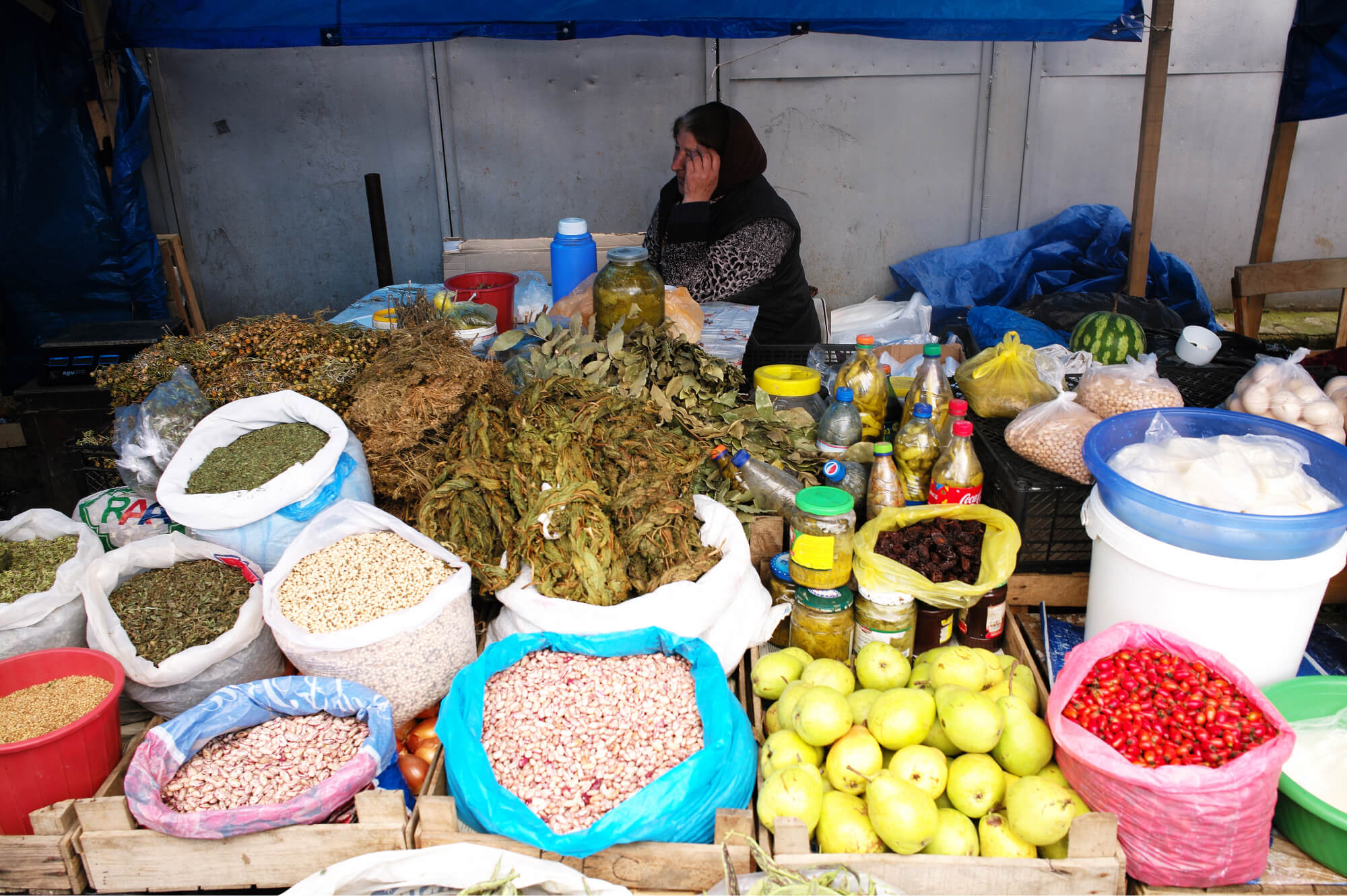
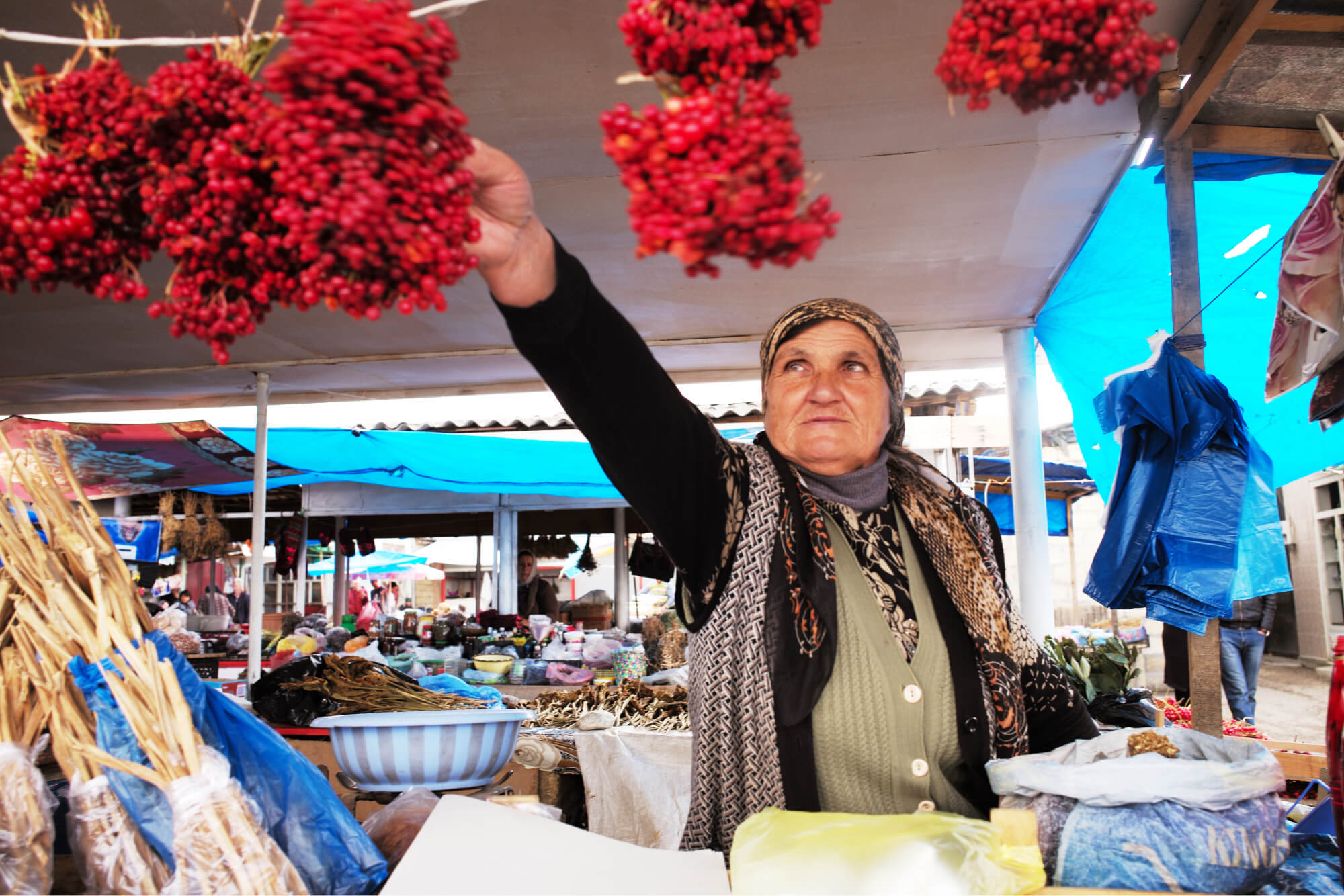
Qusar city, Azerbaijan, 2016.
Qusar city, Azerbaijan, 2016.
THE ALPS
One of the most important autumn dishes in the canton of Valais is Brisolée, a mixture of cheese, fruit, bread, nuts, and smoked meat served with butter and roasted chestnuts.
THE ALPS
One of the most important autumn dishes in the canton of Valais is Brisolée, a mixture of cheese, fruit, bread, nuts, and smoked meat served with butter and roasted chestnuts.
Sion, Canton of Valais, Switzerland, 2021.
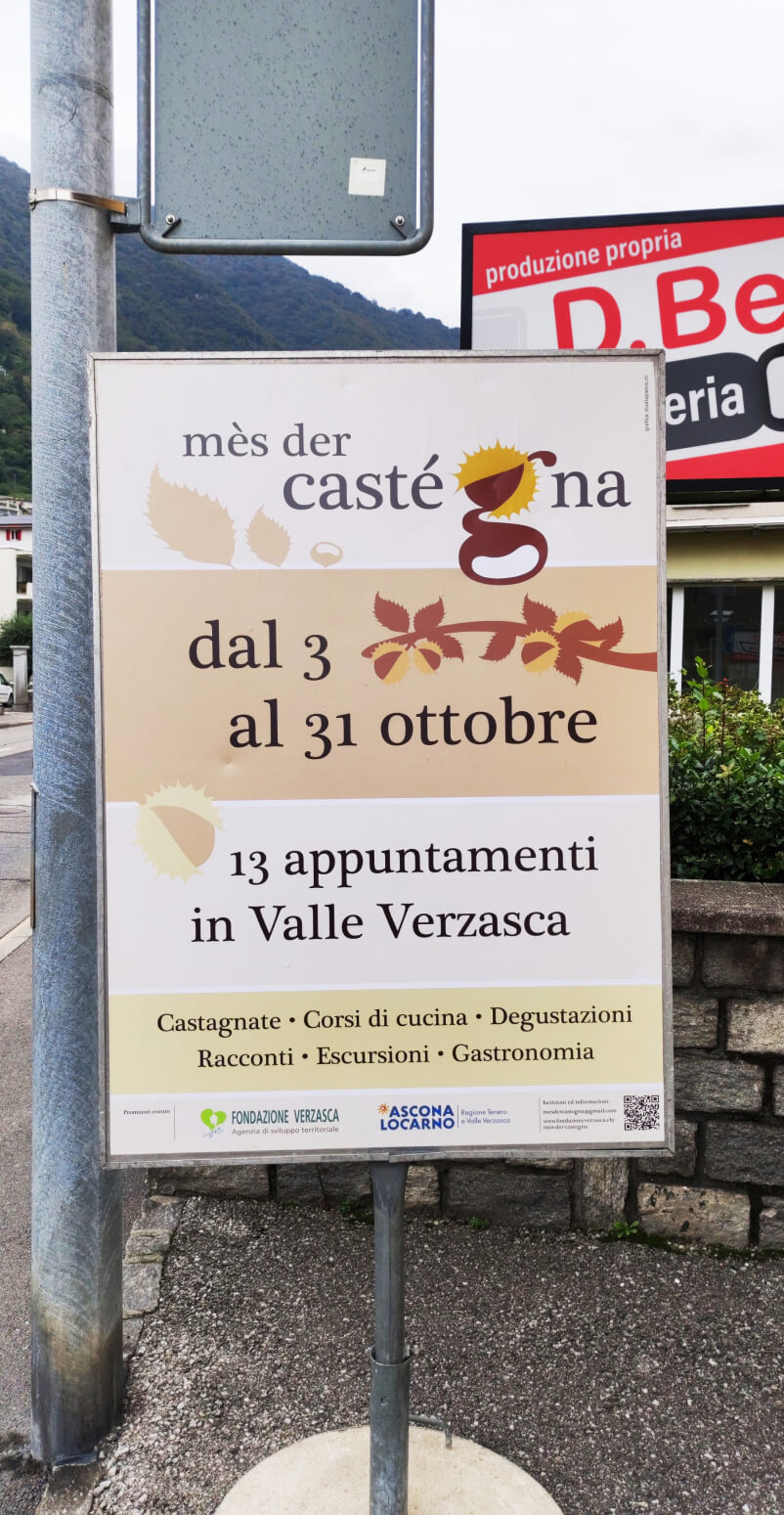
Chestnuts were one of the major foods not so long ago in some regions of Switzerland. Nowadays, it is rather an autumn treat to which the "chestnut" holidays are dedicated.
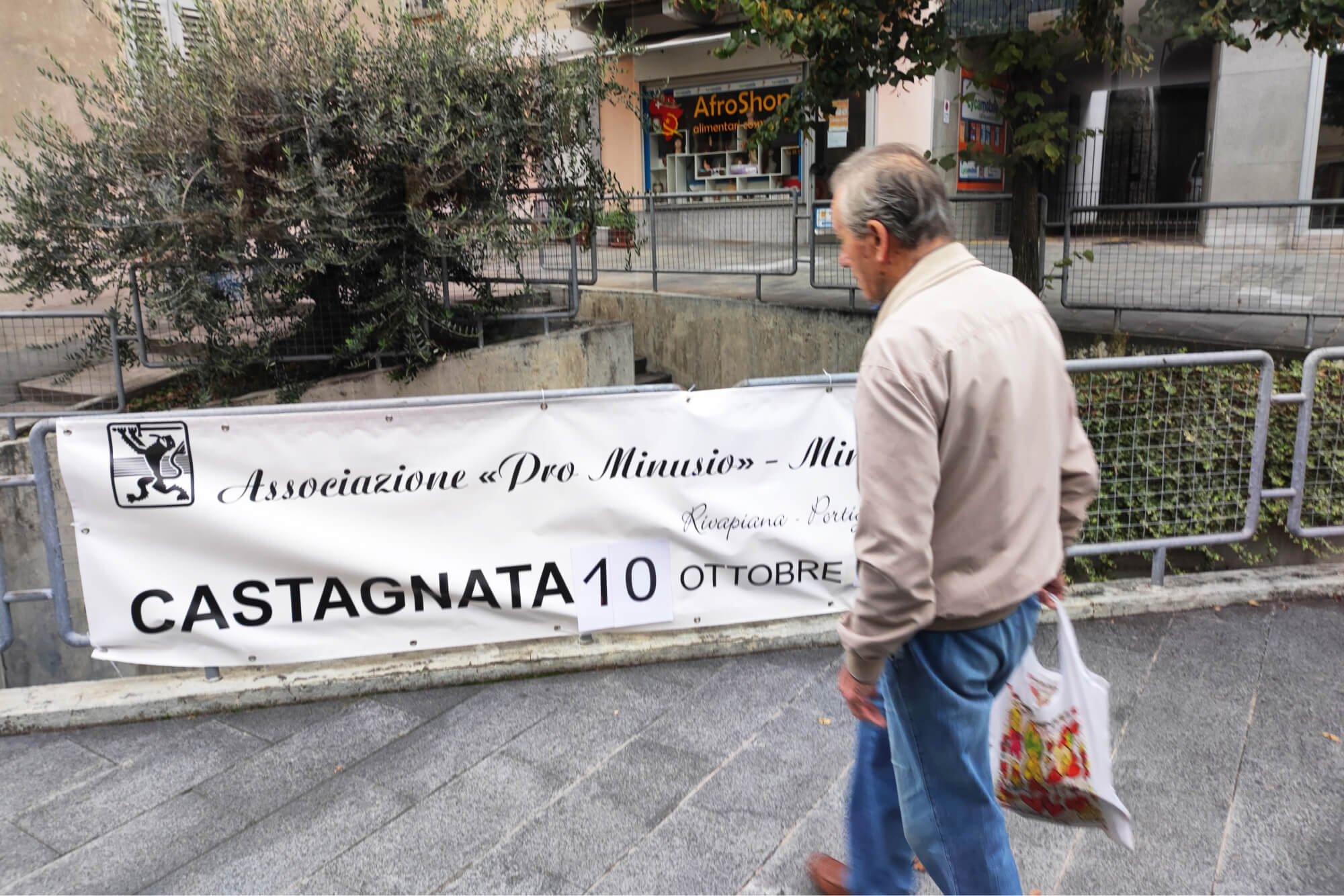
Verzasca Valley, Canton of Ticino, Switzerland, 2021.
Ascona, Canton of Ticino, Switzerland, 2021.
Chestnuts were one of the major foods not so long ago in some regions of Switzerland. Nowadays, it is rather an autumn treat to which the "chestnut" holidays are dedicated.

Verzasca Valley, Canton of Ticino, Switzerland, 2021.

Ascona, Canton of Ticino, Switzerland, 2021.
The hills and mountains around Lake Maggiore are covered with chestnut thickets. "Chestnut harvest festivals" are celebrated in the central squares of various villages in the valleys throughout October. Chestnuts are also eaten in other regions: they are part of the traditional venison dish prepared during the hunting season in autumn. Caramelized chestnuts are served with brussels sprouts, braised red cabbage, spaetzle, and quarry.
The hills and mountains around Lake Maggiore are covered with chestnut thickets. "Chestnut harvest festivals" are celebrated in the central squares of various villages in the valleys throughout October. Chestnuts are also eaten in other regions: they are part of the traditional venison dish prepared during the hunting season in autumn. Caramelized chestnuts are served with brussels sprouts, braised red cabbage, spaetzle, and quarry.
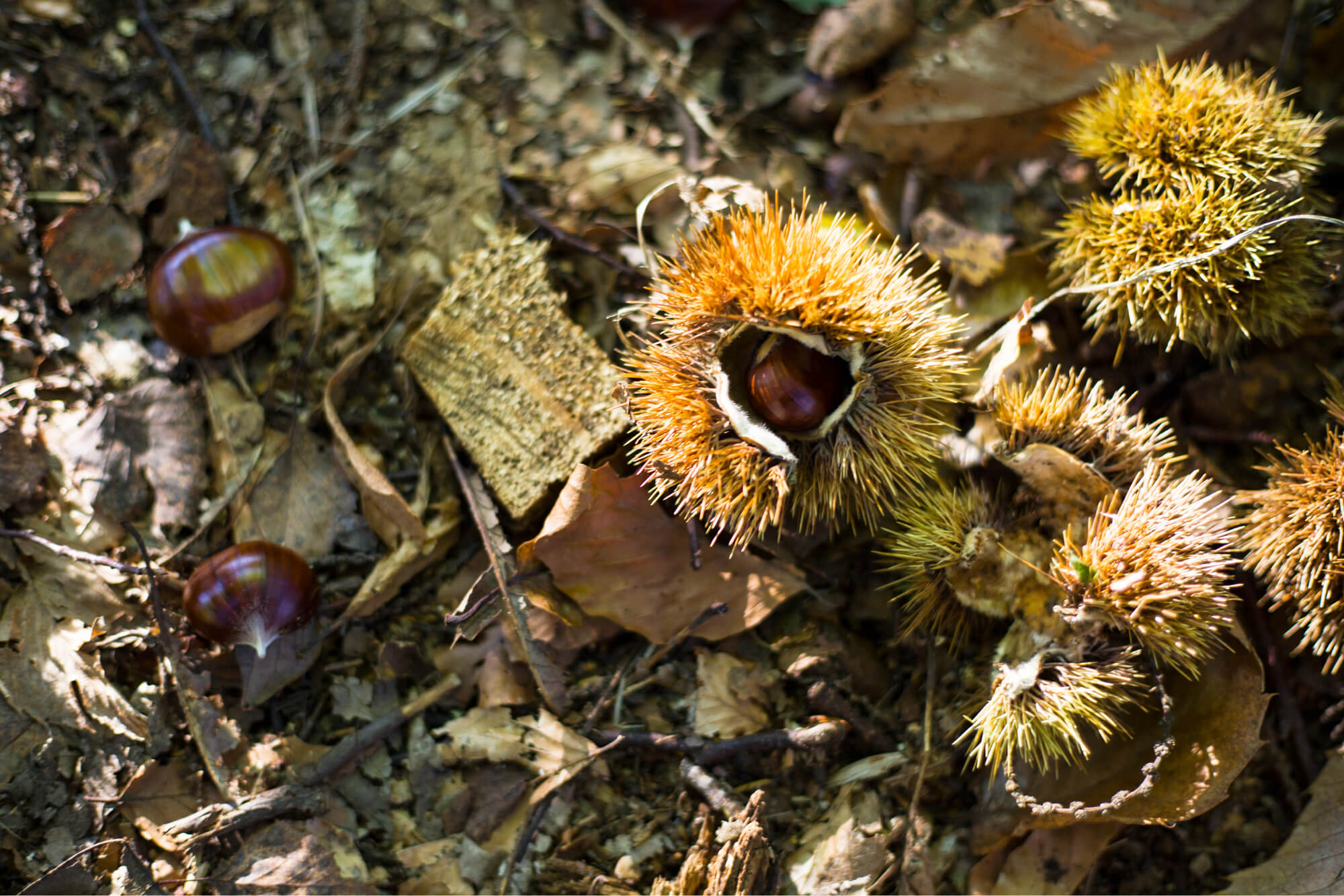
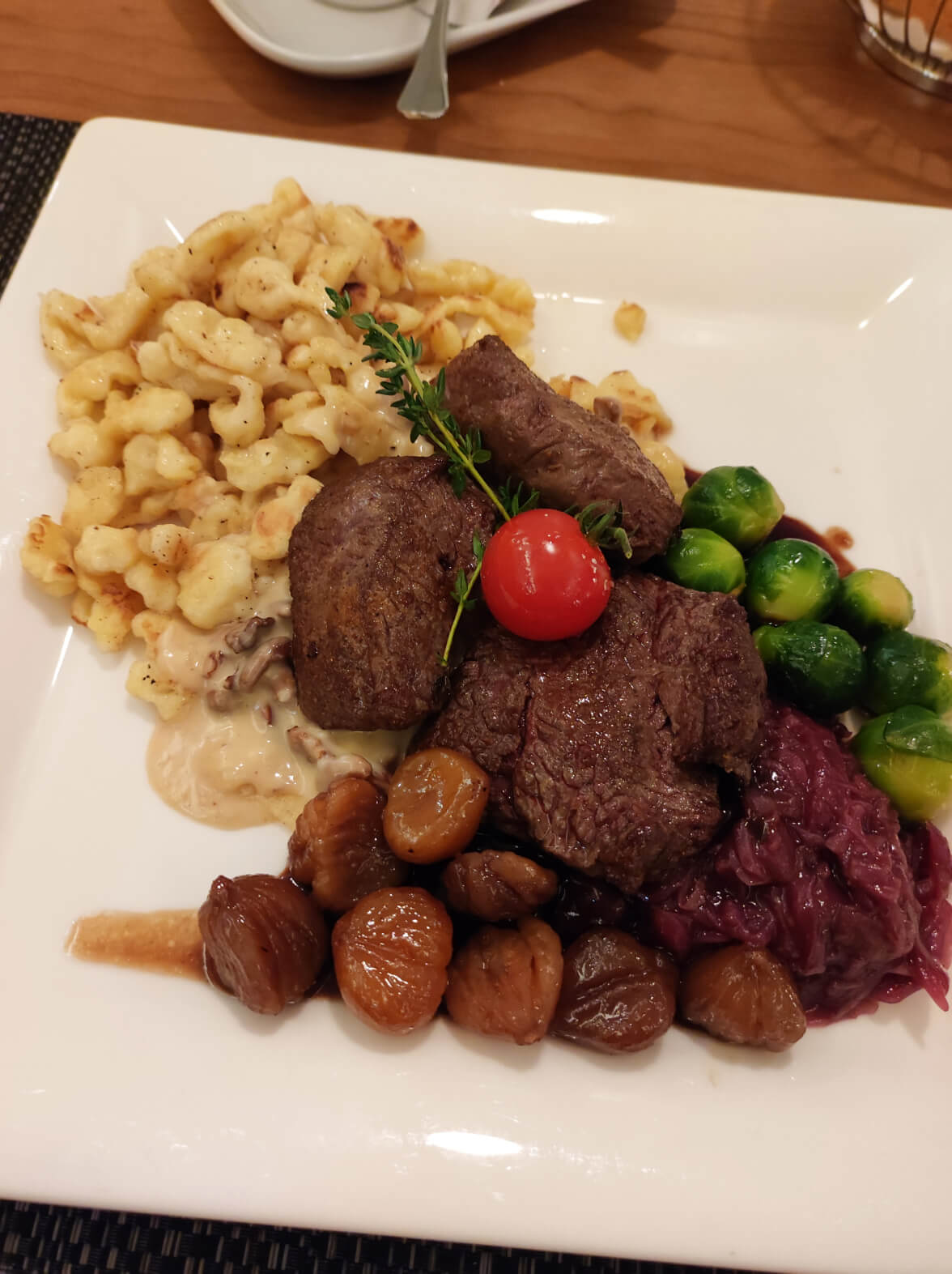
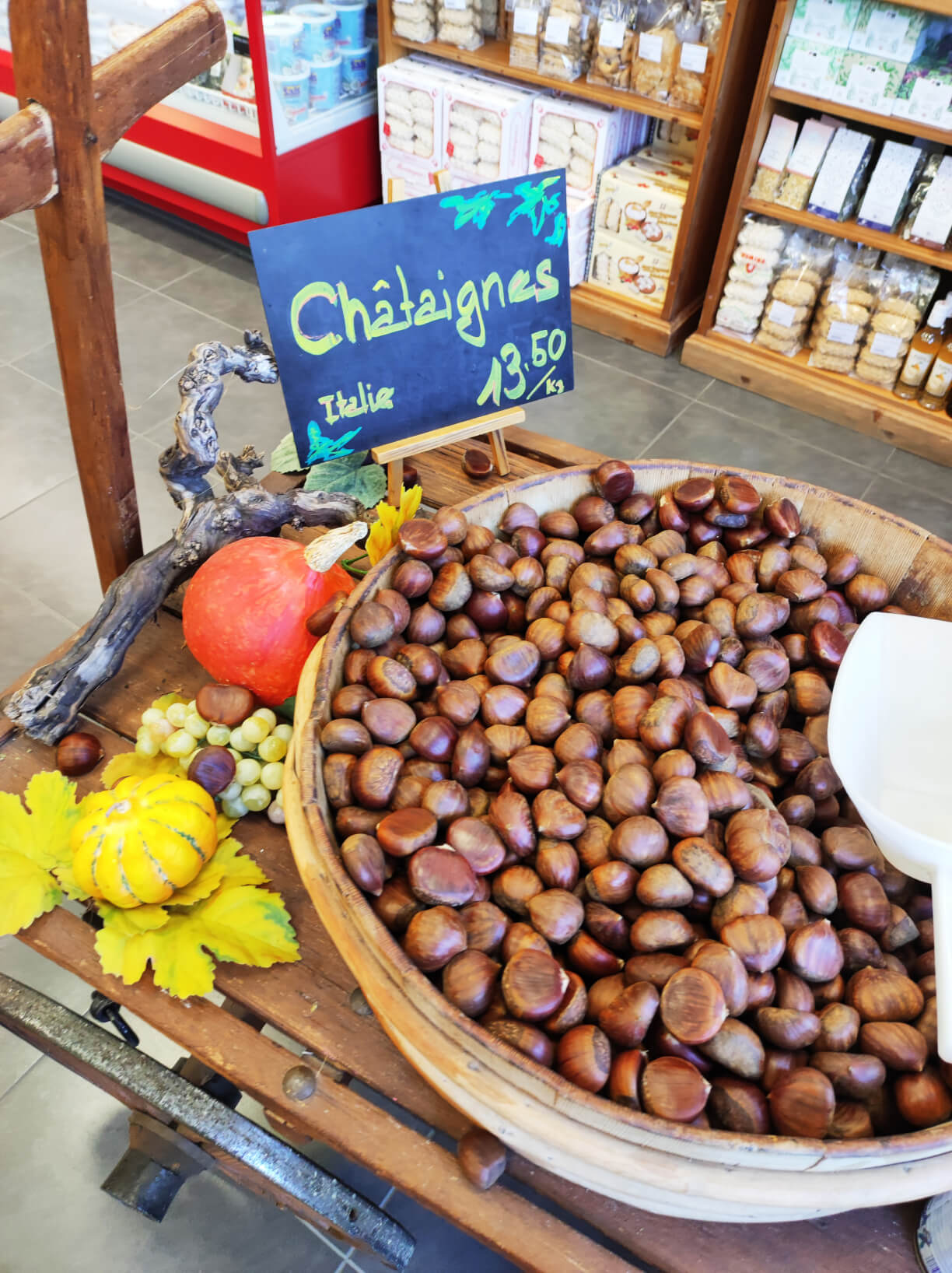
Cantons of Valais and Ticino, Switzerland, 2021.



Cantons of Valais and Ticino, Switzerland, 2021.
©
Anthropogeos. 2021
Contacts
Our social channels









